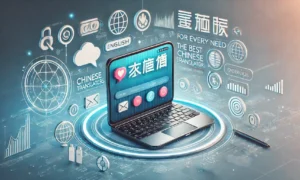In today’s digital age, technology has revolutionized various aspects of our lives, including education. Augmented reality is one such cutting-edge technology that has enormous potential to alter the educational experience. With the help of augmented reality technology, we can better perceive and interact with the environment around us.
In this article, we will explore how augmented reality in education is making its mark, its applications, benefits, examples, challenges, and the future prospects of this exciting technology. Augmented reality has revolutionized the way students engage with educational content by overlaying virtual elements onto the real world, creating immersive learning experiences.
However, as innovative as augmented reality may be, some students may still face challenges with certain courses or classes, whether they are online or in a traditional setting. In such cases, a viable solution is to hire someone to do an online class. By seeking academic help from specialized websites like Quizlet and Scholarly Help, students can find qualified individuals who can assist them in navigating the complexities of their coursework, ensuring they receive the support they need to excel academically.
What is AR in education?
Augmented reality in education refers to the integration of digital information and virtual objects into the real-world learning environment to enhance students’ understanding and engagement..
Applications of AR in Education
Let’s explore some of the exciting applications of Augmented Reality in Education:
-
Interactive Simulations
Students can examine difficult ideas in-depth through the use of interactive simulations made possible by AR. For instance, using AR-enhanced educational content, biology students can virtually dissect animals, chemistry students can perform virtual experiments, and history students can travel to historical civilizations.
-
Virtual Field Trips
Students can do virtual field trips with AR without ever leaving the classroom. into immersive AR experiences, they can visit famous historical sites, investigate ecosystems, or even go into space virtually. This enhances their education by giving them context and a greater comprehension of the material.
-
Language Learning
AR can help language learners by superimposing virtual labels, translations, or pronunciation guides onto actual things. This provides pupils with fun, engaging practice for vocabulary, pronunciation, and language skills.
-
Enhanced Visualization
By bringing abstract ideas to life, AR helps students understand them. AR can give visual representations that help with knowledge and recall for a variety of topics, including exploring the human body and understanding celestial events.
-
Collaborative Learning
AR can encourage group projects, problem-solving, and interaction with shared AR content, which will allow students to learn collaboratively. This encourages kids to communicate, work in teams, and use critical thinking.
Benefits of AR in Education
The integration of augmented reality in education offers several noteworthy benefits:
-
Enhanced Engagement
AR makes learning more engaging and interactive. By actively participating in classes and interacting with virtual objects, students are better able to retain and comprehend difficult ideas.
-
Visualizations and Simulations
AR makes it possible for pupils to intuitively visualize complex data and abstract concepts. Students can more easily understand challenging subjects by manipulating 3D models and exploring virtual worlds.
-
Personalized Learning
AR enabled personalized learning opportunities that take into account different learning preferences and styles. Students can receive immediate feedback and learn at their own pace, promoting a more student-centered approach.
-
Collaboration and Communication
AR encourages student collaboration and communication. They can participate in immersive group activities, collaborate on projects, and solve problems jointly, which will help them improve their communication and cooperation abilities.
Examples of AR in Education
Let’s explore a few examples of how augmented reality is being implemented in educational settings:
-
Anatomy Education
AR apps let students investigate the human body in depth, allowing them to examine organs, systems, and structures in a three-dimensional and interactive way.
-
Historical Reconstructions
Through AR, students can discover ancient civilizations and relive historical events by superimposing virtual persons, structures, or artifacts onto their environment.
-
STEM Education
STEM (science, technology, engineering, and mathematics) ideas are taught interactively through Augmented Reality in Education. Students can simulate experiments, view intricate scientific models, or even construct and test virtual circuits.
-
Language Learning
In an immersive setting, AR language apps give students visual and audio clues to help them practice vocabulary, correct pronunciation, and build language abilities.
-
Art and Design
AR is utilized to improve art and design education, enabling students to view their works in 3D, explore virtual exhibitions, or experiment with digital tools and techniques.
Challenges and Limitations of AR in Education
While Augmented Reality in Education holds immense potential, there are some challenges and limitations to consider:
-
Cost and Accessibility
Investment in hardware, such as smartphones or tablets, and AR-compatible software, may be necessary to implement AR technology in schools. For schools with tight finances, ensuring fair access to these tools can be difficult.
-
Training and Support
To successfully incorporate AR into their teaching methods, educators may need support and training. To create relevant learning experiences, one must be familiar with AR technologies and methodologies.
-
Content Development
Expertise and resources are needed to create high-quality AR content. Collaboration between educators, instructional designers, and content creators is necessary to produce dynamic and interesting AR experiences.
-
Technical Limitations
The capabilities of the used devices and the available tracking and recognition technologies may place restrictions on AR experiences. The seamless incorporation of AR in the classroom may be impacted by technical difficulties or compatibility problems.
-
Pedagogical Integration
AR integration into the curriculum necessitates careful pedagogical design. It’s crucial to coordinate augmented reality activities with learning goals and make sure they support rather than detract from the educational content.
Future of AR in Education
Augmented Reality in Education has a bright future. We may anticipate seeing AR applications integrated and improved as technology develops further. Here are some probable developments:
-
Wider Adoption
The use of AR in education is projected to grow as it becomes more accessible and affordable. More educational institutions will accept AR as a useful technology for increasing teaching and learning.
-
Advanced Simulations
AR simulations will improve in realism and immersion, providing students with ever more real-world learning opportunities. Complex experiments, virtual field visits to remote locales, and simulations of real-world situations will be possible as a result.
-
Data-Driven Personalization
AR systems can gather data on student interactions and progress, providing personalized learning experiences based on individual needs and learning preferences. Applications for adaptive AR will deliver customized information and feedback to encourage the best possible learning results.
-
Collaborative AR Experiences
Future developments in AR will enable more extensive collaborative learning scenarios. Real-time interaction between students, teachers, and specialists will enable the creation of virtual classrooms and the development of cross-cultural relationships.
-
Integration with Other Technologies
It’s conceivable that AR will combine with other cutting-edge technology, like machine learning and artificial intelligence. This integration will improve personalized feedback, intelligent tutoring methods, and adaptable learning.
Conclusion
By improving the learning experience, increasing comprehension and retention, enabling personalized and adaptable learning, and encouraging collaboration and communication, AR is revolutionizing education in a variety of topics, including physics, history, math, and language acquisition.
Although there are obstacles including technical needs, educator preparation, and ethical issues, the future of augmented reality in education is bright. AR has the ability to empower students, close the knowledge gap, and reshape the future of education.
FAQs
-
What are some examples of augmented reality in education?
Virtual field trips, anatomical simulations, and interactive language learning activities are a few examples of augmented reality in the classroom.
-
What devices are needed for augmented reality in education?
Through smartphones, tablets, or specialized augmented reality gadgets like smart glasses, users can access AR in education.
-
Are there any challenges in implementing augmented reality in education?
Cost, technology infrastructure, and assuring pedagogical coherence with learning objectives are difficulties in integrating AR in education.



































